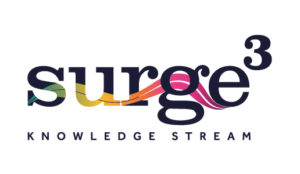“May you live in interesting times” … delivered with a heavy dose of irony, this figurative English translation of a Chinese curse (“Better to be a dog in times of tranquility than a human in times of chaos”) sums up how many of us may be feeling!.
Back in 2006 the EU presciently published a paper on the recessionary effects of a pandemic in Europe. Its baseline scenario suggested a first-year fall in GDP of 1.6% with additional effects pushing this up to between -2% and -4%.
Two years later a financial crisis rather than a pandemic gave us a whole new perspective on recession. UK GDP shrunk by more than 6% between the first quarter of 2008 and the second quarter of 2009. This recession was the ‘deepest’ (in terms of lost output) in the UK since quarterly data were first published in 1955 and the economy took five years to get back to the size it was before the recession. A ‘once in a lifetime’ downturn.
Fast forward to 2020 and anybody whose lifetime is more than a ‘baker’s dozen’ will have now experienced two ‘once in a lifetime’ economic events. The latest baseline forecast envisions a 5.2% contraction in global GDP in 2020 – European real GDP is projected to contract by 7% and the UK by more than 11%. That 2006 EU prediction seems positively benign! We know it’s bleak, and only going to get bleaker.
Yes, there will be some ‘winners’ during this healthcare disaster but the impact on many many businesses around the world is chilling. That marketing spend gets slashed in times of economic uncertainty is just a truism, but businesses need a growth strategy now more than ever – hunkering down or going into hibernation until ‘winter’ passes is not a serious option.
The focus for businesses must be how to grow in economies experiencing unprecedented headwinds and for which – a vaccine notwithstanding – the coronavirus hangover is likely to be felt for some years yet. There are however causes for optimism.
The good news is that ‘the arithmetic of growth’ is pretty straightforward – encapsulated in the ‘where to play’ and ‘how to win’ questions … maintain your own customer base (and potentially increase the lifetime value of each customer), poach customers from competitors, and/or attract new customers to the category, then engineer the marketing Ps to deliver. Strategy, at whatever level, is about making choices. It’s deceptively simple!
But how should you translate this into an actual growth strategy – again when faced with that truism that marketing spend, and especially consumer insight budgets, get cut in times of economic uncertainty. Deepening our understanding of our consumer isn’t optional or a ‘nice-to-have’ – but with a greater focus on cost and budgets we need to be very sure of the ROI. How does one develop a growth strategy when under such unprecedented commercial pressure?
Firstly, think ‘agile’! and secondly don’t reinvent the wheel.
The last 9 months have demonstrated how ‘agile’ organisations can be … process bureaucracy has gone out of the window in response to this crisis. Agile organisations are fast, resilient, and adaptable and putting in place the building blocks of a growth strategy should similarly not be a long, drawn out, ‘drains-up’, exercise. It should also be a pragmatic and flexible process or system.
And the customer insight required is already, largely, there – if you choose to look for it. The amount of data available to your organisation has increased exponentially and shows no sign of slowing. You must have the ability to integrate and synthesize the plethora of information that is now available to you, to harness this to the task of solving the problem.
And while there may be some sort of quasi-scientific method that would deliver a solution – there isn’t time that there used to be to digest all this new information, as organisations are driving an agile agenda – which means faster, leaner decision-making and so rethinking the classic approach to problem solving you have to become comfortable with leaner and creative ways of adding value … to engage in effectual reasoning. This is about having a broad notion of where you are heading and adjusting on route. It is not worrying too much about the how but focusing on the ‘end game’. This contrasts with the more causal approach to business problem solving which required us to evaluate risk and proceed in a more cautious way.
Early in 2020 we were embarking on growth strategy project for a UK based multi-national. Lock-down #1 threw everything up in the air – timetable, budget and process.
It would have been easy to just pull the rug on the entire project, but to their credit the leadership team decided that a growth strategy would provide a pathway through the coming recession and set the business up for success longer term. And it would get proper focus – the CEO mandated that “this is not an ‘at-the-side-of-the-desk’ effort”
However, compromises had to be made. Instead of traditional qualitative and quantitative and a process taking circa 6 to 8 months, we quickly arranged a wider pool of internal stakeholder interviews and a deep review of internally held data, while in parallel arranged 50 qualitative interviews with their own customers and non-customers identified through ‘connections’. Our work is always highly collaborative which appealed to a client team very keen to get involved in all aspects of the process.
Was it ‘perfect’? No. Did it work? Yes. It took 3 months to conduct the interviews, integrate this information with the organisation’s existing data, develop the initial frameworks, identify future growth opportunities and agree on customer priorities. And with these foundations the business could hone its ‘brand benefit’ and develop its capability road map – those elements needed to be in place to deliver its differentiated product offer to its target customers.
“The work has gone down brilliantly with the board” CEO
“A great team effort and great team result” Chief Commercial Officer
In developing this key framework, everybody bought into the fast, adaptable and resilient mantra – and in this same spirit redefined what was acceptable vis-à-vis the data, information and knowledge that they would work with … looking with fresh eyes at the value of what we might call non-traditional data.
Developing a growth strategy doesn’t always need ‘new’ data – in our experience organisations sit on a treasure trove of under exploited data, information and knowledge – conventional and unconventional. This ranges from, previously collected, quantitative and qualitative data, behavioral and sales data and the relevant experience and market knowledge of key stakeholders within the business.
Tapping into this enables you to unearth nuggets of insight at a fraction of the cost of a new research project. Organisations should ‘squeeze this orange’ for all it is worth.
Now in today’s environment, the ground may have fundamentally shifted, and so what we learnt yesterday may not help us understand today – but by marshaling what we know, we can ensure that any new data that needs to be collected or areas to be explored are focused laser like on the issues at hand – short and sharp – we are not spending any time reinventing the wheel. This saves both money and time
The organisations that succeed (and maybe thrive) during and after this pandemic will be those organisations which truly ‘know what they know’ and pragmatically apply this knowledge in a fast, resilient, and adaptable way to identify future choices and a winning strategy.



